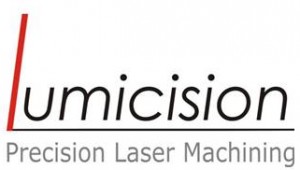
Fiber laser principle
Definition: Lasers in which the active medium is an doped fiber (with some elements) or lasers whose fibers are made of fiber.
Fiber lasers are those lasers where the environment of interest consists of optical fibers. Although some lasers are called a fiber laser (or semiconductor fiber lasers) with semiconductor semiconductor environments (a semiconductor optical amplifier) and a fiber loop, devices include a type of laser (eg, diode laser lasers) and a fiber amplifier It is also often referred to as fiber laser (or fiber laser systems).
In many cases, the fiber is rich in rare earth element ions such as Erbium (Er3 +), Neodymium (Nd3 +), Ytterbium (Yb3 +), Thulium (Tm3 +), Praseodymium (Pr3 +) , which is injected into the fiber and also uses one or more lubricants for blowing. So many fiber lasers are diode-laser lasers.
Although the fiber of laser lasers is similar to semiconductor lasers, the wave-guide effect and effective median surface usually result in essentially different characteristics of these lasers. For example, lasers work much more and have a little waste of wear.

Fiber laser lasers
To make laser-fiber lashing, there is a need for a reflector (a mirror) that is formed by a linear in convertibility or a fibrous circular laser . Different types of mirrors are used in fiber-optic lasers:

In simple laboratory layouts, ordinary dielectric mirrors, as seen in the figure.They are positioned vertically, near the end of the fiber. This approach is not very practical and does not have high stability.The freshness of the underside of the fiber is often sufficient to dye the output light of a fiber laser and illustrates this.The dielectric layers can be applied to the fiber end by evaporation method. Such layers can reflect a wide range of wavelengths.For commercial products, fiber brags are used either directly on the active fiber or made on the inactive fiber and welded to the active fiber. The shape of a laser with a distributed brigade reflector (DBR), with two fibers, is shown in Fig. But there are distributed beam feedback lasers (DFBs) that use only a Bragg net made on an active substance with a fuzzy shift in the middle of it.

![]()
By aligning the fiber output beam with a lens and retro-reflecting the beam, using a dielectric mirror, the better the ability to achieve power is obtained by the intensity on the mirror, largely due to the increase in the surface of the beam. But adjusting the settings, though small, causes significant loss in reflective light. In addition, additional freshness reflections at the end of the fiber can lead to filter effects and the like. The effect is eliminated by using cut-off fibers, which, of course, itself can cause polarization-dependent dissipation.
Powerful fiber lasers
In fact, the first fiber lasers were only a few milliwatts. But there are now high-power fiber lasers that produce a single-fiber power equivalent to several hundred watts and sometimes several kilos. This feature is due to the large surface-to-volume ratio in the fiber (which avoids overheating of the fiber) and its waveguide effect, which avoids even thermoelectric problems even during significant warming.
The Lumicision uses high power fiber lasers in to cut different kinds of metals in various thicknesses and high quality.For more information contact us.
